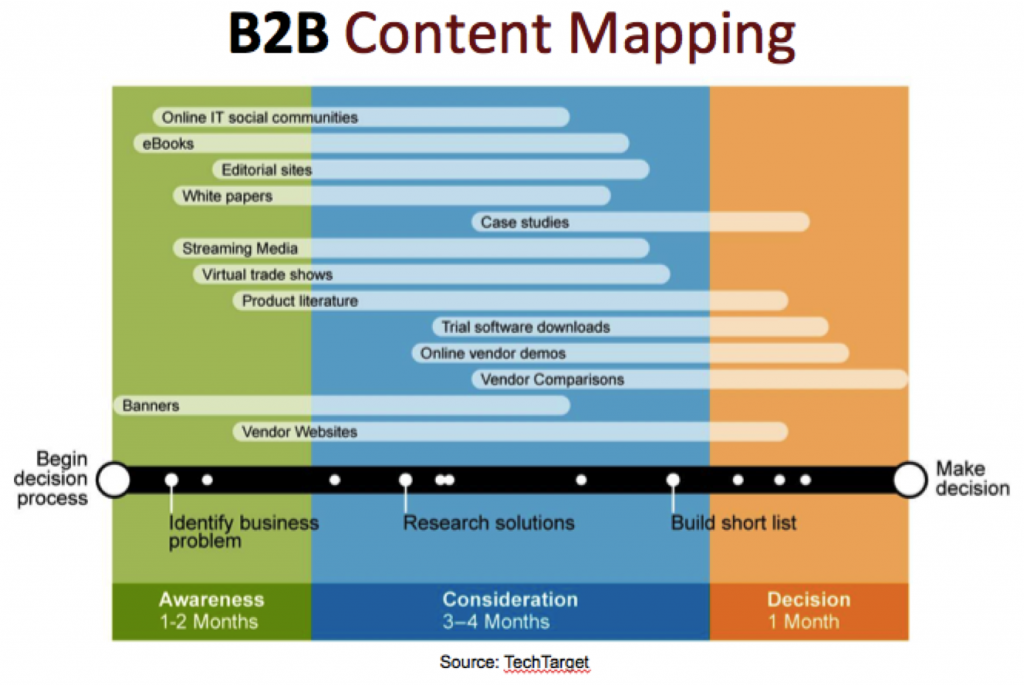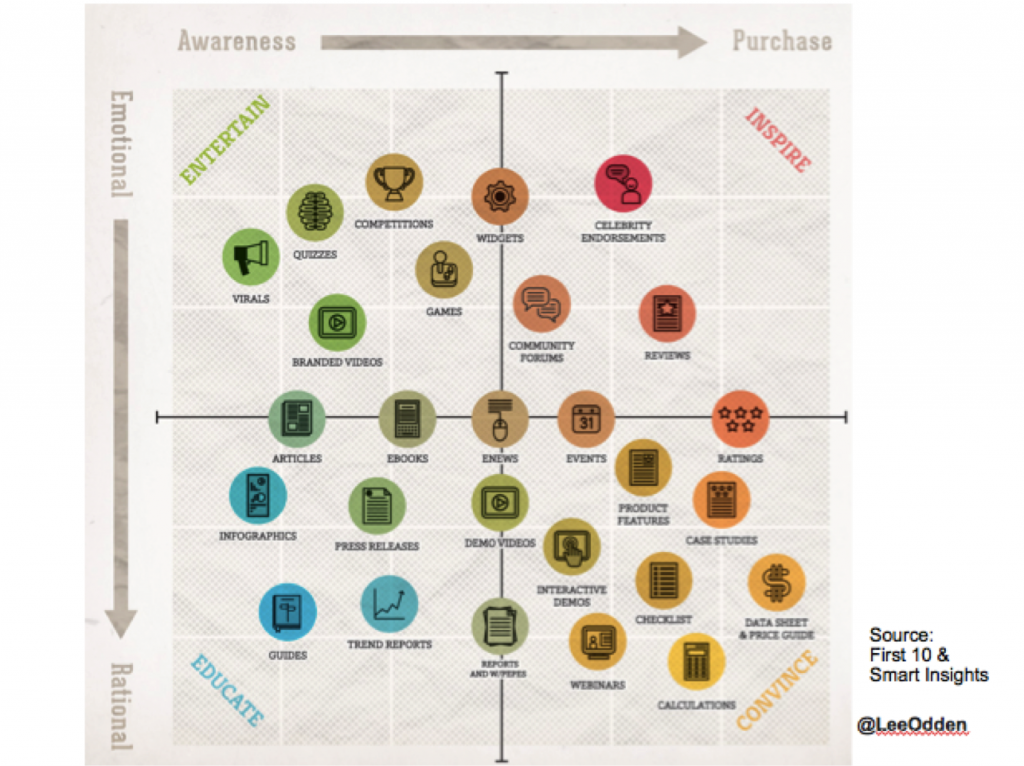 On the second day of SES San Francisco, I headed to Lee Odden’s session Optimize B2B Content Across the Sales Cycle. Lee kicked off the presentation by polling the audience on how engaged they were in SEO, social media and content marketing. Hands raised all over the room. When he asked how many were focused on content marketing across the sales cycle, it was striking that there relatively few hands raised. As focused as we all are on conversions and purchases, we are not all capitalizing on the opportunity to attract and engage with our customer at every point in the buying cycle, and as a result, customers can slip away.
On the second day of SES San Francisco, I headed to Lee Odden’s session Optimize B2B Content Across the Sales Cycle. Lee kicked off the presentation by polling the audience on how engaged they were in SEO, social media and content marketing. Hands raised all over the room. When he asked how many were focused on content marketing across the sales cycle, it was striking that there relatively few hands raised. As focused as we all are on conversions and purchases, we are not all capitalizing on the opportunity to attract and engage with our customer at every point in the buying cycle, and as a result, customers can slip away.
Although I have heard Lee speak multiple times, have read and refer to his book Optimize, and help execute content marketing strategies on behalf of TopRank clients, I was blown away by the amount of new insight I was able to take away from Lee’s presentation. So for all of you loyal readers of this blog and those who have read Optimize, I present you with three new things we can learn from Lee Odden’s presentation.
1. Integrate and align your tactics
90% of B2B marketers are using content marketing tactics to grow their business. So 90% of you are leveraging tactics such as blogs, social media, eNewsletters, case studies and article postings to attract potential customers to your website. The question is no longer if you using content marketing tactics, it’s are your content marketing tactics integrated? Tactics should be integrated so that they all fit within an overall strategy to attract, engage and convert your audience. If these tactics are not strategic, then, as Lee would say, you are just throwing spaghetti up against the wall to see if it sticks. More often than not, this will result in mistaking correlation or coincidence with causation.
Lee then takes us one step further. Tactics shouldn’t only be integrated within an overall strategy; they must be optimized and integrated. Optimization and integration of tactics is what transforms content into a powerful tool to lead your customer from awareness to advocacy.
2. Tell the story first, choose your platforms later
Lee points out that often, we spend too much time in the beginning worried about selecting our platforms. Should we create a YouTube channel? What about an infographic? Or a LinkedIn group?
This is a mistake. The information is the most important piece of your strategy, not the media format. You must tell a story to your customer. This isn’t a pass to say what you think is most important, but rather to create the story which will enable the customer throughout their journey. Attract them via their pain points and compel them by connecting their pain points to your product or service.
The fact is, that today, the majority of customers want to guide themselves through the buying cycle. If you do not have the content which targets awareness, interest, and consideration then you risk losing a potential customer.
Lee presents three ways to help visualize B2B content mapping:
- Timeline: create a timeline of your buying cycle and then map each tactic onto the timeline based on where it fits in the customer journey.
- 4 Quadrants: Each quadrant is dedicated to different intention: entertain, inspire, educate or convince. Each type of content is placed in a quadrant and then mapped along an X and Y axis to indicate point in buying cycle. The visual will allow you to create an editorial plan which accounts for stage in the buying cycle, while reinforcing the emotional journey.
- Map Brand and Buyer Goals to Info: This worksheet type format allows you to outline your goal, buyer’s objective, information conveyed and format based on point in buying cycle.


If you already have an editorial plan you are using, great. These formats introduce ways to reimagine a content plan in order to account for optimizing across the buying cycle. This type of plan will increase the likelihood of creating an editorial plan with tactics which are both integrated and optimized for the customer story.
3. How To Measure Business Value: Optimization isn’t valuable just from a customer acquisition perspective; it is valuable across the entire sales cycles. This means we have to move beyond measuring the value of our content plan or marketing initiative based on only the number of new customer acquisitions. Think of all the different business outcomes which create value:
- Increased share of voice
- Improved service
- Shorter sales cycle
- Lower marketing costs
- Engagement with influential communities
Content should be created and optimized for all of these different business outcomes. Strategically planning content which aligns with stage in the buying cycle, and is customized based on the desired outcome, in more likely to impact and influence the consumer.
Marketers need to move beyond the perspective that the most important measure of social success is number like or followers and instead hone in the audiences which are most influential. Creating content optimized for this influential audience is unique and though provoking will be ultimately more impactful.
Most importantly, Lee reminds us that optimization is a holistic approach. Optimization isn’t something that only happens as we are writing website content. In order to truly optimize across the buying cycle, optimization should be a state of mind.


